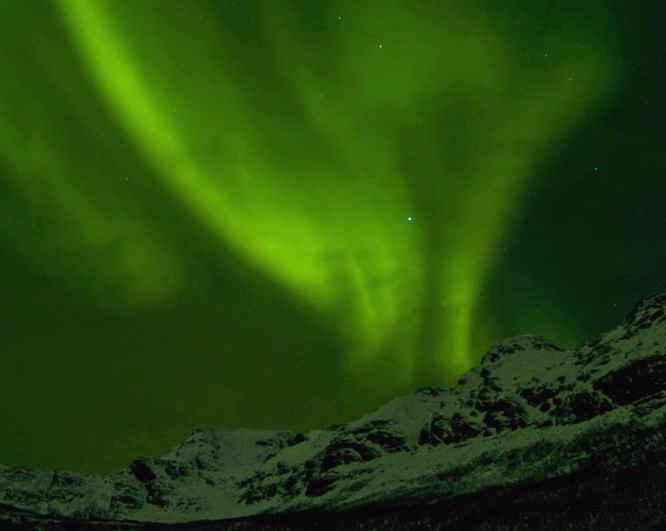The Aurora Borealis, Northern Lights in Iceland
What is the best location and time to see the Northern Lights? You cannot predict when you will see the Northern Lights. You are wasting your time if the weather is overcast. Ideally you need clear skies preferably on a moonless night. Check the night time weather forecast and look on the internet to find out information about the lunar cycle.

Try to plan your visit when only a small part of the moon is visible. A full moon illuminates the sky and reduces the visible strength of colour and intensity of the Aurora Borealis. During periods of active solar winds the Aurora Borealis becomes more dramatic. Again check the internet to find out current sun activity.
You may have to wait a number of hours on a very a cold night. Drive your hire car out into the country so as to get away from the lights of the town. Try and find a high spot. During the hours of daylight find the best location. Make sure your petrol tank is full so you can keep the car ticking over and the heater on whilst you wait in the dark for the main event.
The amazing natural phenomena known as the Aurora Borealis or Northern Lights is best witnessed within the Arctic circle in northern Norway, Iceland and Sweden. The Aurora Borealis happens all the time but it is just harder to see in lighter conditions The best time to view the northern lights is from September through to April.
The further south in Scandinavia you go, the shorter the Aurora Borealis season will be. A common question is how often is the Aurora Borealis visible? This depends on your location. In Tromso in Northern Norway, so long as the evenings are clear, the frequency is normally every other night. In central or Southern Sweden it may only be visible 2 times a month.
How to Photograph the Northern Lights
You cannot hand hold a camera and get a good picture when taking a photo of the northern lights. You will need a tripod to keep your camera steady. Use a trigger cord or remote wireless trigger if you have one. If not use your camera's timer delay function. (That is the setting you normally use to take a picture of yourself and your friends.) This is to stop your finger jilting the camera and blurring the photograph when you push the release button.
Switch your camera to manual focus and set it to infinity. If your camera allows you to manually adjust the ISO rating then set it to an ISO between 400-800. Use a wide angle lens or a zoom lens set to the lowest number available. Good exposure times are between 20 to 40 seconds per picture.
Cold Weather Camera Equipment Problems
To avoid condensation on your camera lens leave it out outside for a while before you want to use it so it can match the outside temperature. If you keep your camera in a warm car and then take it out when the Aurora Borealis starts it's display you are going to get very frustrated as the lens will be fogged up and useless.
Drained Batteries
Camera batteries lose their charge quickly in cold weather. It is essential to carry fully charged spare batteries. Lithium batteries are a good choice as they are better at holding a charge. Keep the spare batteries in the warmth of your inside coat pocket or near the car heater but be careful they do not get too warm as this could cause condensation when they are placed into the cold camera.Travel books

